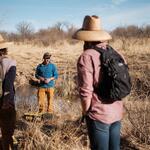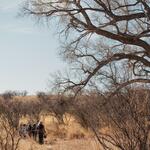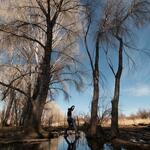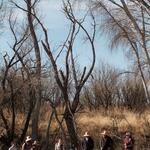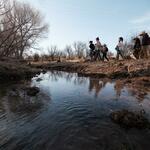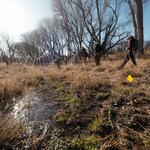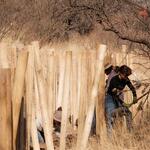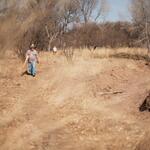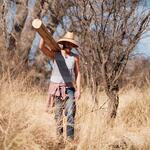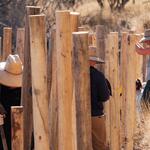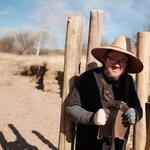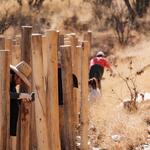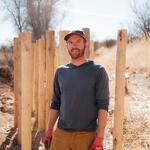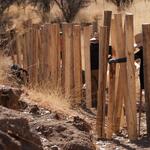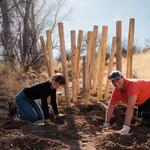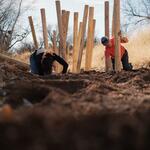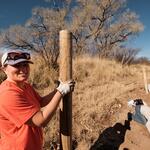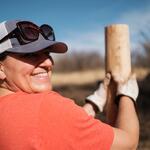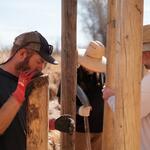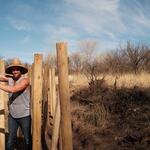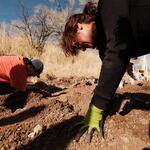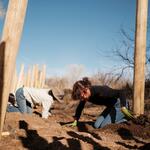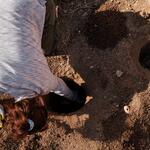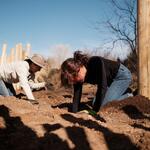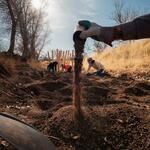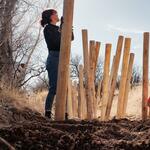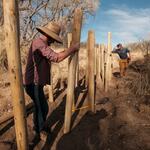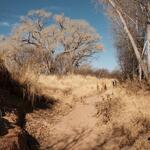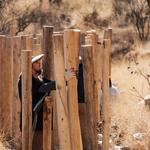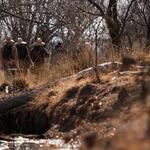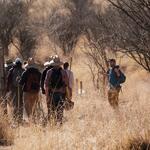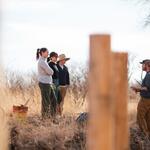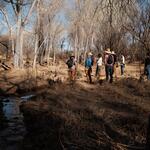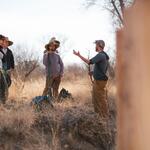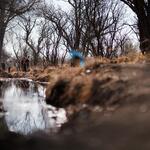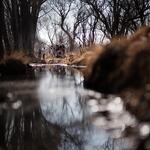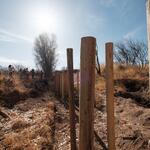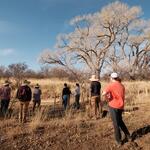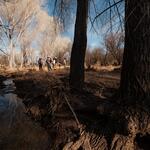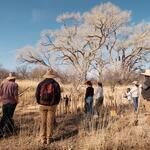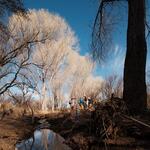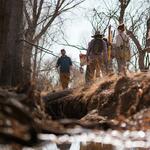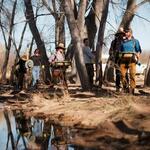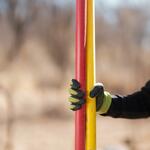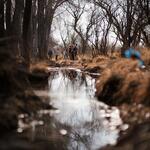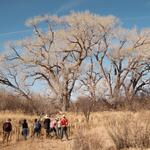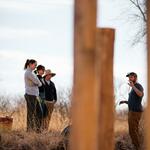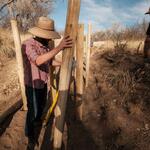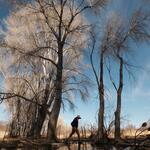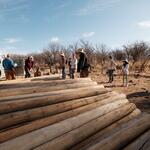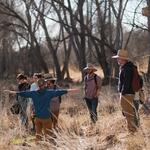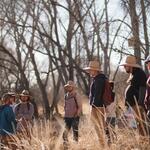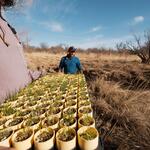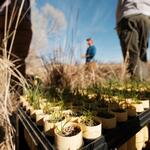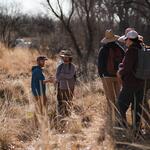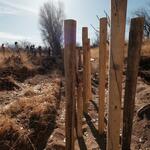Ciénega Creek, located in Southern Arizona, has stretches which flow seasonally as well as year round. It has some of the most intact riparian areas in the state of Arizona. The creek is an important source of groundwater for the Tucson area as it flows northwest into Tucson where it becomes the Pantano Creek, and eventually joins the Rillito River..
We have projects both along the downstream reaches of Ciénega Creek and also up watershed in the Bureau of Land Management’s Las Ciénegas National Conservation Area, near Empire Ranch, with the goals of recharging groundwater, restoring the creeks' connections to the floodplain and reducing erosion to improve water quality. This work will also improve essential habitat for critical riparian species like the Chiricahua leopard frog, the Mexican garter snake, and the yellow billed cuckoo.
In previous years, Watershed Management Group built one-rock dams and zuni bowls to stabilize and raise the channel in the lower section of Empire Gulch, a tributary to Empire Gulch. This year (2022) we focused our efforts higher up on Empire Gulch along and just downstream of a perennial (year-round flow) stretch. We planted fremont cottonwood, goodings willow, coyote willow, and a number of grass species to provide canopy cover and stabilize the arroyo banks with their roots. Some of the photos you see will show the plants mentioned.
About a half mile below these plantings, we identified an area which could benefit from a weir. A weir is a structure built into the stream bed with the intention of collecting sediment and raising the bed of a stream closer to the original floodplain. Although weirs can be built of many things including rocks, we chose to build a weir made from wooden posts, also known as a post weir, as you’ll see in the photos below.
A post weir is made of many long poles driven into the ground. They are most effective in a straight stretch of steam bed. The poles we used for this project were 8 foot long and 5 inches in diameter. They were placed around 18 inches away from each other. The poles were driven into the ground 4 to 5 feet deep and then were cut down depending on the height we wanted to raise the bed of the stream. These weirs are cut low to the ground for two reasons. First the force of water and debris hitting a post that is too high out of the channel bottom could damage the post or wash it down river, and secondly, if you create a drop on the backside of the structure, a headcut can form, meaning that water can erode the streambed even more, the exact opposite of what we are hoping to achieve. With all of this in mind, the posts were cut to about 4 inches above the channel bottom.
The stretch of stream we chose was an incised section, meaning that the stream bottom is low compared to the floodplain of the area; they are disconnected, but the area had access to a flood terrace. You can see a depiction of this in some of the photos below. The goal of this project was to raise the channel bed to the height of the terrace and allow water to spread across a larger area in lower flows and aid in it reaching the floodplain during high flows. Reconnecting the creek to the floodplain will ensure more water reaches the riparian forest and help propagate new tree seedlings to sustain the forest.
After the monsoon season we will check the structures and see how well they held up against the monsoon rains. Please enjoy these photos of our work in this area from the April 2022 workshop

